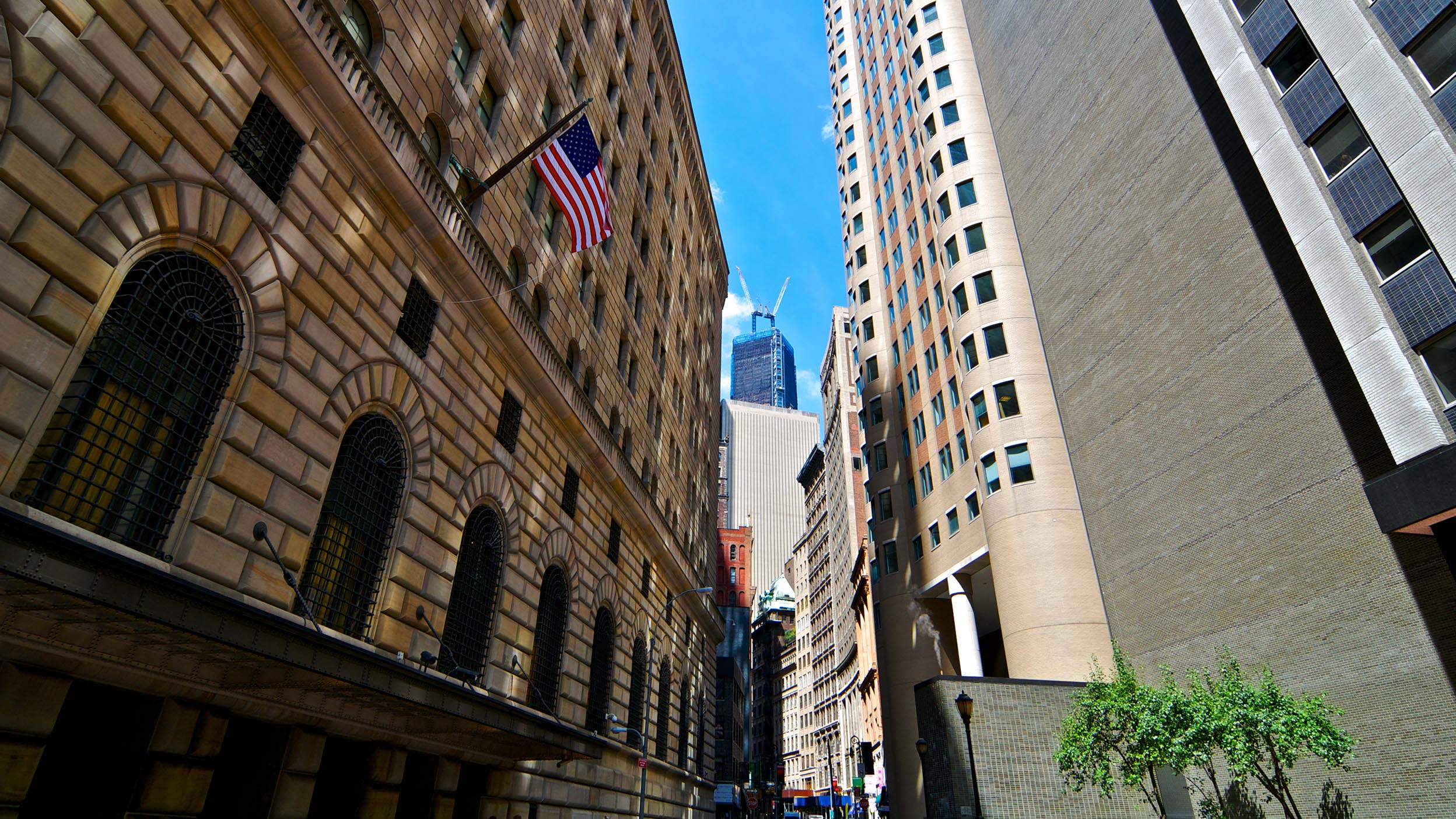
Investment grade Investment grade outlook: Insights for November
We expect OK growth and lower rates, and are focusing on the front-end of duration, and continuing to lean into sectors with strong fundamentals.

Despite a rate cut, Treasury yields climbed — highlighting market uncertainty and shifting expectations for future policy.
Investment grade bond demand remains high, with oversubscribed new issues and tight spreads despite lower yields.
Focus on moderate credit risk and duration, aiming for steady carry while avoiding extremes in a volatile market.
The Federal Reserve (Fed) cut interest rates, Treasury rates moved higher, and financial markets reacted in ways that seemed counterintuitive. Plus, demand for investment grade remained strong despite yields coming down. What does it mean for investment grade bonds and the economy? We tackle these topics and more in our Q&A on how we’re navigating the bond market in October.
Craig: The 25-basis point (bps) rate cut in September was largely as expected, yet Treasury rates moved higher across the yield curve. Why did rates respond this way?
Matt: Rates can be volatile whenever the Fed shifts policy. The market starts focusing on what’s next, both for the path of cuts as well as what the cuts mean for the growth of the economy and inflation expectations. It’s currently pricing about one less rate cut by the end of 2026 than what the expectations were before the September Fed meeting.1
Craig: Some Federal Open Market Committee (FOMC) members and economists have made the case for continued or even faster cuts, while others have argued for a more patient approach. Assuming Chairman Jerome Powell will be replaced by someone more dovish when his term expires next May, is this what the market should be pricing?
Todd: Even if the next Fed Chair is inclined to take rates lower, to gain FOMC support, the argument for lower rates must still be justified by the economic situation. Also, the Fed controls the front end of the curve, but as you saw, even the 2-year yield rose after the Fed cut. The market is going to move the curve, and if the Fed is doing something that the market perceives will, for example, be inflationary, rates may react adversely.
Craig: Matt, you’ve generally been fairly optimistic on the US economy this year. Headlines and forecasts throughout the year, however, have been gloomy at times due to tariffs, consumer confidence, the labor market, and other concerns. Do you still think the economy is on a good footing?
Matt: We’ve seen upward revisions to gross domestic product (GDP), solid corporate earnings, and continued projections for large capital expenditures from the tech sector related to artificial intelligence (AI). Plus, companies have been rewarded in the stock market. While you may hear about headwinds for the economy, however, that’s not what’s reflected in asset prices. So, while I’m positive on the economy, I’m not suggesting loading up on risky assets.
Fortunately, high-grade bonds are well-positioned to perform in a range of economic outcomes. With valuations the way they are, we don’t see value in trying to pick up the last bit of incremental yield. For the reasons I just mentioned, we’re also not getting overly defensive. It’s also why we think the Fed can continue to cut even though the economy looks OK. Since rates are still restrictive, there are still risks that could knock the economy off course.
Craig: Financial markets reacted in ways that seemed counterintuitive in September. Are we back to the world of “good news is bad news” and the market is all about whether or not the Fed cuts?
Todd: That’s what it felt like in the short term. I don’t think the economy is desperate for Fed support. But markets may want cuts, especially when valuations are stretched. Still, I think good news is good news… unless it’s too good and vice versa. We don’t want to discount what the market is telling us, but I think some of those oscillations are mostly about uncertainty, which we’ve had plenty of this year. If those reactions get too far away from our view, then they’re potentially buying or selling opportunities for us.
Craig: Let’s talk about performance. The Bloomberg US Aggregate Bond Index was up 1.09%2 over the past month, and the Bloomberg US Corporate Bond Index was up 1.50%.3 You’ve noted valuations are tight, so how were you able to navigate this market?
Matt: You mentioned earlier that rates backed up after the Fed cut, but they’re actually lower on the month, and spreads are also tighter. We’ve been slightly long on duration, particularly on the front end. We’ve also been overweight credit risk, given the positive views we’ve discussed. We’re really just staying the course on that view. Earning positive carry has been the key. At the same time, because of tight valuations, we’re running low tracking error — or active risk — relative to history.
Craig: Yields recently touched year-to-date lows of around 4.25% on the Bloomberg US Aggregate Bond Index and 4.65% on the Bloomberg Corporate Bond Index.4 We’ve talked all year about how the steady demand from yield-focused buyers has supported the investment grade market. Has that bid for bonds started to fade as yields have come down?
Todd: No, we’ve had more than $1 trillion of issuance year-to-date,5 and yet market demand continues to be very strong. Last month, we had one of the largest new issues of the year — $18 billion from one of the large tech companies.6 It was more than four times oversubscribed. New issue discounts are razor-thin and spreads remain tight — all signs that demand continues to outstrip supply. While we may be past peak yields in investment grade, yields are still attractive relative to history. There’s also a fear of missing out on yields now that the Fed is cutting, which tends to drive increased demand. You’ll probably continue to see that as the curve steepens and investors who’ve been parked in cash can’t get the yields they’ve become accustomed to without buying longer-dated bonds.

We expect OK growth and lower rates, and are focusing on the front-end of duration, and continuing to lean into sectors with strong fundamentals.

The Federal Reserve’s next move is on investors’ minds. What could a rate cut mean for investment grade bonds? We answer this question and more.

What AI-driven earnings, potential rate cuts, tight credit spreads, and mergers and acquisitions activity may mean for bond portfolio positioning.


Get the latest information and insights from our portfolio managers, market strategists, and investment experts.
Important information
NA4886138
Image: EschCollection / Getty
All investing involves risk, including the risk of loss.
Past performance does not guarantee future results.
Investments cannot be made directly in an index.
This does not constitute a recommendation of any investment strategy or product for a particular investor. Investors should consult a financial professional before making any investment decisions.
A credit rating is an assessment provided by a nationally recognized statistical rating organization (NRSRO) of the creditworthiness of an issuer with respect to debt obligations, including specific securities, money market instruments, or other debts.
Credit risk is the risk of default on a debt that may arise from a borrower or issuer of bonds failing to make required payments.
Credit spread is the difference in yield between bonds of similar maturity but with different credit quality.
Tracking error measures the divergence between the price behavior of a portfolio and the price behavior of a benchmark.
Dovish refers to an economic outlook that generally supports low interest rates as a means of encouraging growth within the economy.
Positive carry is a financial strategy where an investment generates enough income to cover its financing costs, resulting in a net profit from just holding the asset.
Duration is a measure of the sensitivity of the price (the value of principal) of a fixed income investment to a change in interest rates. Duration is expressed as a number of years.
Fixed income investments are subject to credit risk of the issuer and the effects of changing interest rates. Interest rate risk refers to the risk that bond prices generally fall as interest rates rise and vice versa. An issuer may be unable to meet interest and/or principal payments, thereby causing its instruments to decrease in value and lowering the issuer’s credit rating.
The Federal Open Market Committee (FOMC) is a committee of the Federal Reserve Board that meets regularly to set monetary policy, including the interest rates that are charged to banks.
The front end of the yield curve refers to bonds with shorter maturity dates.
A basis point is one-hundredth of a percentage point.
Gross domestic product (GDP) is a broad indicator of a region’s economic activity, measuring the monetary value of all the finished goods and services produced in that region over a specified time period.
High yield bonds, or junk bonds, involve a greater risk of default or price changes due to changes in the issuer’s credit quality. The values of junk bonds fluctuate more than those of high-quality bonds and can decline significantly over short time periods.
Inflation is the rate at which the general price level for goods and services is increasing.
Interest rate risk refers to the risk that bond prices generally fall as interest rates rise and vice versa.
Junk bonds involve a greater risk of default or price changes due to changes in the issuer’s credit quality. The values of junk bonds fluctuate more than those of high-quality bonds and can decline significantly over short time periods.
Monetary easing refers to the lowering of interest rates and deposit ratios by central banks.
Many products and services offered in technology-related industries are subject to rapid obsolescence, which may lower the value of the issuers.
Relative value refers to the value of one investment as compared to another.
Spread represents the difference between two values or asset returns.
Tracking error measures the divergence between the price behavior of a portfolio and the price behavior of a benchmark.
The yield curve plots interest rates at a set point of time for bonds of equal credit quality but differing maturity dates in order to project future interest rate changes and economic activity.
The opinions referenced above are those of the author as of Oct. 13, 2025. These comments should not be construed as recommendations, but as an illustration of broader themes. Forward-looking statements are not guarantees of future results. They involve risks, uncertainties, and assumptions; there can be no assurance that actual results will not differ materially from expectations.
This link takes you to a site not affiliated with Invesco. The site is for informational purposes only. Invesco does not guarantee nor take any responsibility for any of the content.